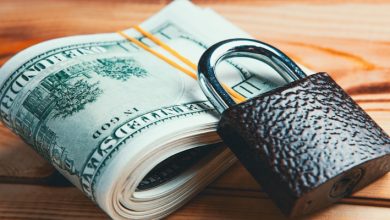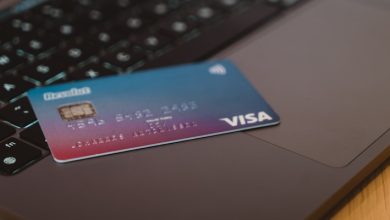How to Protect Your Crypto from Malware and Ransomware

- Understanding the risks of malware and ransomware in the crypto world
- Best practices for securing your crypto assets
- Identifying common types of malware targeting cryptocurrencies
- Steps to take to protect your digital wallet from ransomware attacks
- The importance of keeping your software and antivirus up to date
- How to recover your crypto assets in case of a malware attack
Understanding the risks of malware and ransomware in the crypto world
It is crucial to understand the risks associated with malware and ransomware when it comes to safeguarding your cryptocurrency investments. Malware is malicious software designed to infiltrate and damage computer systems, while ransomware is a type of malware that encrypts files and demands payment for their release.
When it comes to the crypto world, these threats pose a significant risk to your digital assets. Malware can steal your private keys or passwords, giving cybercriminals access to your cryptocurrency wallets. Ransomware can lock you out of your files or demand payment in cryptocurrency to unlock them.
To protect your crypto from malware and ransomware, it is essential to take proactive measures. This includes keeping your software up to date, using reputable antivirus programs, and being cautious of suspicious emails or links. Additionally, consider storing your cryptocurrency in hardware wallets or cold storage to minimize the risk of online attacks.
Best practices for securing your crypto assets
When it comes to protecting your cryptocurrency assets from malware and ransomware, it is crucial to follow best practices to ensure the security of your investments. Here are some key tips to help you safeguard your crypto holdings:
- Use a reputable antivirus program to regularly scan your devices for any malicious software that could compromise your crypto wallets.
- Enable two-factor authentication (2FA) on all of your accounts to add an extra layer of security and prevent unauthorized access.
- Keep your operating system and software up to date with the latest security patches to protect against known vulnerabilities.
- Avoid clicking on suspicious links or downloading attachments from unknown sources to reduce the risk of malware infections.
- Consider storing the majority of your cryptocurrency holdings in offline hardware wallets or cold storage to minimize the risk of online attacks.
By following these best practices and remaining vigilant about the security of your crypto assets, you can significantly reduce the likelihood of falling victim to malware or ransomware attacks. Remember, it is always better to be proactive when it comes to protecting your investments in the volatile world of cryptocurrency.
Identifying common types of malware targeting cryptocurrencies
Cryptocurrency users should be aware of the common types of malware that target their digital assets. One prevalent form of malware is ransomware, which encrypts a user’s files and demands payment in cryptocurrency to unlock them. Another type is keyloggers, which record keystrokes to steal sensitive information such as passwords and private keys. Additionally, cryptojacking malware secretly uses a victim’s computer to mine cryptocurrency without their consent. It is crucial for users to stay vigilant and take proactive measures to protect their cryptocurrencies from these malicious threats.
Steps to take to protect your digital wallet from ransomware attacks
Protecting your digital wallet from ransomware attacks is crucial in ensuring the security of your cryptocurrency. Follow these steps to safeguard your funds:
- Keep your software up to date: Regularly update your wallet software to patch any vulnerabilities that hackers could exploit.
- Use hardware wallets: Consider storing your cryptocurrency in a hardware wallet rather than an online wallet, as they are less susceptible to malware attacks.
- Enable two-factor authentication: Add an extra layer of security to your wallet by enabling two-factor authentication, which requires a second form of verification to access your funds.
- Be cautious of phishing attempts: Avoid clicking on suspicious links or downloading attachments from unknown sources, as they could contain malware designed to steal your cryptocurrency.
- Backup your wallet: Regularly backup your wallet onto an external storage device to prevent losing access to your funds in case of a ransomware attack.
The importance of keeping your software and antivirus up to date
Ensuring that your software and antivirus are regularly updated is crucial in protecting your crypto assets from malware and ransomware attacks. Keeping your software up to date helps to patch any vulnerabilities that hackers could exploit to gain access to your devices and steal your sensitive information. Similarly, updating your antivirus software ensures that it can effectively detect and remove any malicious programs that may attempt to infect your system.
Failure to update your software and antivirus leaves your devices and crypto assets vulnerable to cyber threats. Hackers are constantly developing new malware and ransomware variants to evade detection by outdated security measures. By regularly updating your software and antivirus, you are staying one step ahead of cybercriminals and reducing the risk of falling victim to their malicious activities.
It is important to set up automatic updates for your software and antivirus to ensure that you are always protected with the latest security patches. Additionally, be cautious of phishing emails and suspicious websites that may trick you into downloading malware onto your system. By staying vigilant and proactive in keeping your software and antivirus up to date, you can safeguard your crypto assets and maintain peace of mind in the digital world.
How to recover your crypto assets in case of a malware attack
In case of a malware attack on your crypto assets, it is crucial to act quickly and follow the necessary steps to recover your funds. Here are some tips on how to recover your crypto assets after a malware attack:
- Disconnect your device from the internet: The first step is to disconnect the infected device from the internet to prevent further damage and unauthorized access to your crypto wallets.
- Scan your device for malware: Use a reliable antivirus program to scan your device and remove any malware that may have caused the attack.
- Change your passwords: Change all your passwords, including those for your crypto wallets, exchanges, and other accounts to prevent any unauthorized access.
- Restore your wallets from backups: If you have backups of your crypto wallets, restore them to recover your funds. Make sure to use secure and verified backups to avoid any further security risks.
- Contact your wallet provider: Reach out to your wallet provider or exchange platform for assistance in recovering your funds. They may have additional security measures or tools to help you regain access to your assets.
By following these steps promptly and efficiently, you can increase your chances of recovering your crypto assets and minimizing any potential losses from a malware attack.



